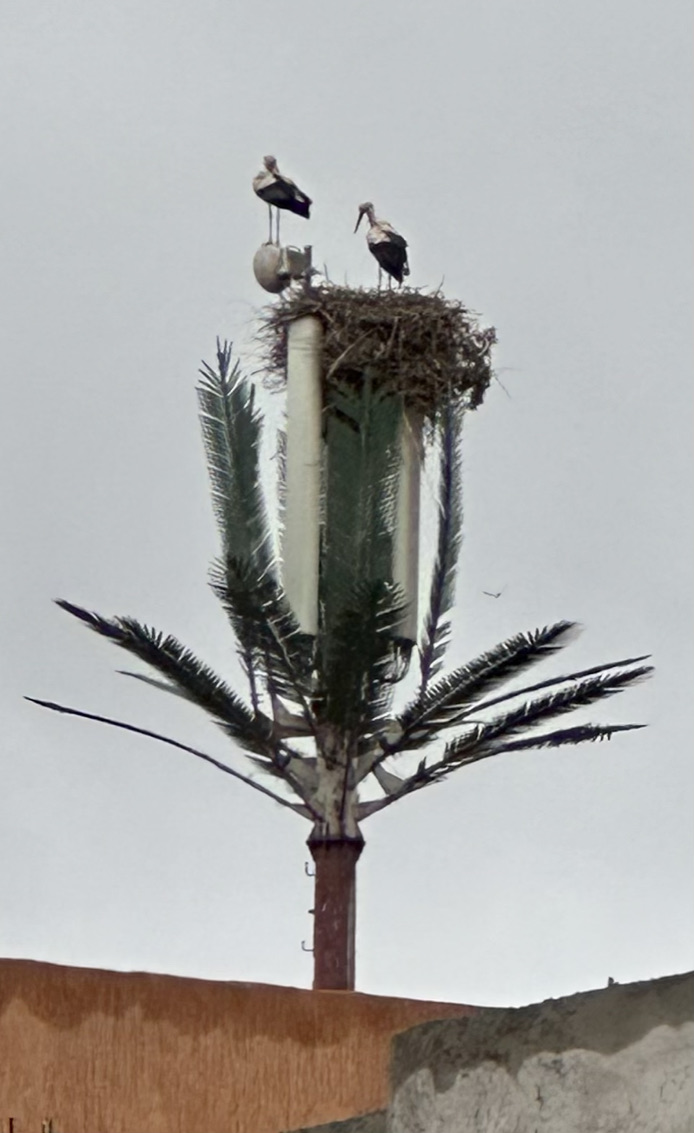Walk the streets of any Moroccan community and you will see scrawny feral cats. But few dogs, stray or leashed.
It’s by design.
A dog’s barking is thought to chase away good spirits from a home. Hence, their exclusion. Felines, on the other hand, carry the legacy of the divine, as a cat was among the gods venerated in ancient Egypt.
If a dog sits on a prayer rug it must be cleaned before use. No cleaning is required if a cat sits on a prayer rug.
Donkeys are a favored form of conveyance for both people and material. A donkey can be trained to walk on its own to designated points. Indeed, the U.S. Army purchased Moroccan donkeys to supply troops and villages in the mountainous regions of Afghanistan.
When visiting Marrakech look up, to the tops of fake palm trees serving as communication towers. There you’ll find large nests of storks that annually make a pilgrimage to Marrakech. They return each year to enlarge and refurbish the same nests.
The number of storks is dwindling because global warming is interfering with their internal guidance systems.
Storks are monogamous, staying faithful to one spouse even after its death.
Moroccan men, on the other hand, may be polygamous as permitted by the Koran. Sharia law that allows a man to have as many as four wives at a time.
Modern Moroccans sought to end polygamy without contradicting Sharia law. In 2004 a law restricted a husband’s ability to expand his betrothed. It granted permission if three conditions were met: the husband could demonstrate reasonable need of another wife, such as the failing health of his first wife; he could provide evidence of his financial ability to support multiple families; and, perhaps most difficult, he obtained written permission from his first wive(s).
Less than 1% of Moroccan men practice polygamy. For those who do, it is customary that the Number One wife is determined by the first to deliver a male child.
Moroccan Trivia: Morocco boasts the highest per capita number of olive trees. Its population of near 38 million cultivates 400 million olive trees.
Morocco produces 20% of its energy needs from solar power, 10% from wind.
Couscous is Morocco’s signature food, as our group found out during the recent Temple Israel Center of White Plains-Keshet Educational Journeys tour of the country’s Jewish heritage.
Each meal prepared by various hosts of the Jewish communities we visited began with an assortment of Moroccan salads—eggplant, beets, cole slaw, carrots, potato, cucumber and more—followed by a huge tagine of steamed vegetables sitting on mounds of couscous, enough to feed the proverbial Russian army. But that was just the beginning. Platters of beef replaced the tagine, to be, in turn, replaced by platters of chicken, the prelude to platters of fresh fruit.


